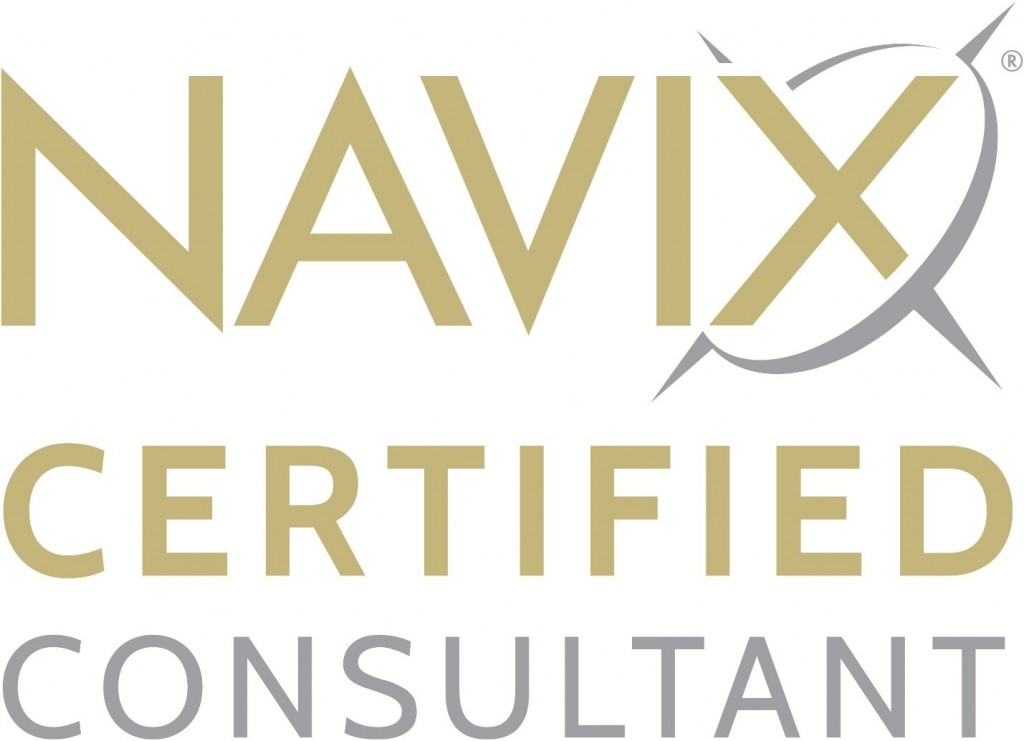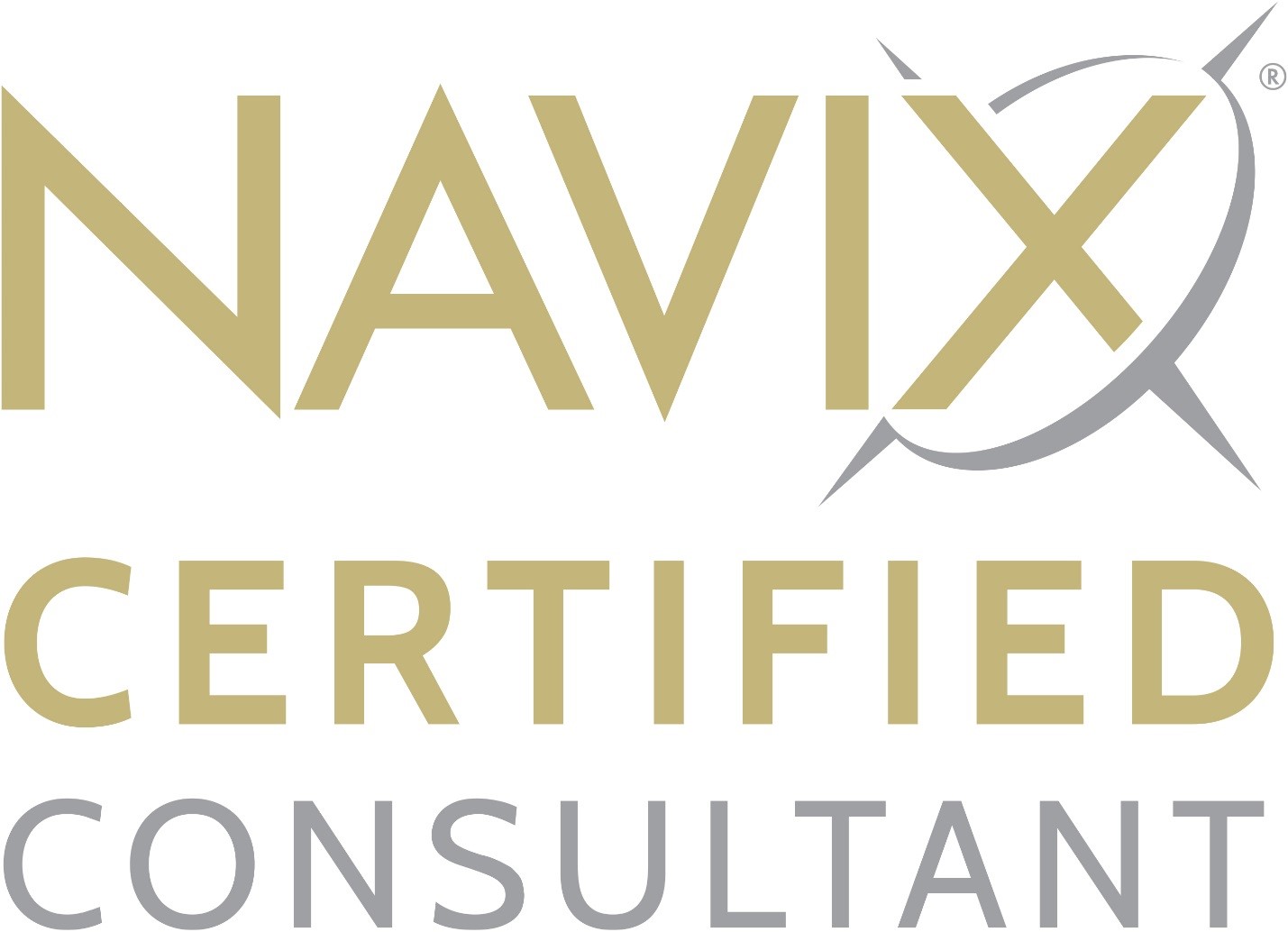
Posts Tagged "Exit Plan"
Eight Tactics to Escape the Dark Side of Owner Dependency
By: Patrick Ungashick

In one of the Star Wars movie’s pivotal scenes, Darth Vader attempted to lure his son Luke Skywalker to the dark side of the Force, warning “You don’t know the power of the dark side.” Luke’s skill and talent with the Force made vulnerable to the dark side, and thus the target of his nefarious father’s attention.
There is a powerful lesson here for business owners like you. Your skills and talents may come back to haunt you when you ultimately try to exit from your businesses. Within many companies, the owner is the most valuable and vital employee. Your knowledge, relationships, and vision are what drives the business. Undoubtedly you have help—no CEO/owner build a sustainable business by himself or herself. However, for years or even decades, much of your company growth has mostly been due to your personal presence and efforts. Then, one day, you wish to exit. If at that time you remain an essential employee, you may be unable to achieve commonly held exit goals: financial freedom, a sustained business legacy, and an exit on your own terms. You may find yourself in the dark side, trapped inside the company.
To overcome this, owners must build businesses that are not dependent on them. You must create a business that has the leadership, resources, and plan not merely to survive a transition, but to thrive after you have exited. Reducing owner dependency is, like resisting the dark side’s temptations, easier said than done. Most owners enjoy what they do, and understandably do not wish to become irrelevant within their own companies. Additionally, the company is accustomed to tapping the owner’s talents and skills to the fullest. Yet, as you move closer to exit, owner dependency, if left unaddressed, becomes a serious obstacle to exit success.
Listed below are eight tactics to reduce dependency between now and your future exit.
1.Build a leadership (and/or management) team that can handle day to day operations without you. Ideally, the team can run the company for at least thirty days’ normal operations without your involvement.
2.Collaborate with your leadership to devise and follow a written business growth plan for the next two to three years. Meet periodically during the year to measure performance against the plan’s waypoints and address any lagging results.
3.Conduct leadership team meetings according to a set published schedule. Make sure meetings are run effectively and occur even when you are absent. Meetings should lead to clearly defined and documented decisions.
4.Ensure that the leadership team members have current, written job descriptions and that their job performance is measured against clearly defined and tracked benchmarks.
5.Create a business development team and systems that perform effectively, all the way from lead generation to closing the sale, without your involvement.
6.Verify that your normal daily/weekly duties are either not essential to the business or could be readily filled by other employees cross-trained in those areas.
7.Brief the company’s top employee leaders on your exit goals. These employees must be sufficiently trustworthy for you to share your exit goals in confidence with them. In return, you must create the win-win for them. This can be accomplished using specialized compensation plans to incentivize top leaders to build company value and stay with the organization up to and beyond your exit.
8.Avoid meeting alone with important external relationships, such as customers, prospects, vendors, and lenders. It sends a message that you are the company. If you must participate in these meetings, delegate as much of the conversation as possible to others from your team.
Maximizing Business Value
Creating a company that can survive and thrives without you typically takes several years of focused effort; another reason why preparing for exit must begin no later than five years prior to your intended exit age. The good news is that a company that can operate independently of you is usually a more valuable business if you intend to sell, and a more stable business if you want to exit by way of turning it over to family or employees.
To help, download our popular free ebook: Your Last Five Years: How the Final 60 Months Will Make or Break Your Exit Success. Then, contacts us to schedule a free phone conversation to learn how we have helped hundreds of business owners plan for and achieve a happy exit.
If you have a quick question coming out of this article or, if you want to discuss your situation in more detail, we can set up a confidential and complimentary phone consultation at your convenience contact Tim 772-221-4499,

What Do You Want Your Legacy to Be? White Paper
By: Patrick Ungashick

Legacy. This single word causes business owners more emotion when they are preparing for exit than any other single word. Few owners would define an exit as being “successful” if somehow their exit failed to uphold strongly-held values and beliefs. Legacy is hard to define. It means different things to different people. Yet it is immensely powerful. Many owners surprise themselves by how important legacy becomes a vital motive once they get close to exit. Legacy is so powerful that it can veto price. For example, many owners are willing to accept a lower purchase price for their company if it means making sure their employees, customers, and brand are treated better by that particular buyer.
It’s imperative to determine what is essential to you about legacy before you intend to exit when there is time to plan and implement steps that will achieve your success. (Read this article about why all business owners should start their exit planning five years prior to exit.) Waiting until shortly before exit to figure out what’s significant to you narrows your options and usually increases your stress. For example, many owners have some employees they want to thank once they exit, generally with significant bonus checks. Who to thank? How much to spend? Who gets what? These are some of the common questions that keep owners awake at night — owners who wait to address this until shortly before exit always stress with these decisions. Those questions are difficult to answer at any time, and even more challenging when you have dozens of other things pressing on you shortly before exit.
Figuring out your legacy wishes takes time and reflection. To help you get started, download this free white paper, The Three Laws of Legacy. This insightful article can help you identify what will be relevant to you about legacy—well before you reach exit.
If you have a quick question coming out of this article or, if you want to discuss your situation in more detail, we can set up a confidential and complimentary phone consultation at your convenience contact Tim 772-221-4499
In Family-Owned Businesses, Equal is Not Fair and Fair is Not Equal
By: Patrick Ungashick

Do you have at least one child working in your family business, and at least one child who is not working in your business? If you do, and if you want to treat all of your children fairly in your business exit and succession planning, prepare not to treat them equally. Because in exit planning for family businesses, fair is not equal and equal is not fair.
To show why, here’s a true story involving a previous client.A Client Story
Dad and Mom had started a construction company nearly forty years earlier. Along the way, Dad and Mom had raised two children: one Son and one Daughter. Son began working in the company right out of school, and eventually became the company’s President. As part of Dad and Mom’s exit planning, they wanted to pass their business down to the Son eventually.
Other than their company, Dad and Mom owned a modest home, a little cash, and a significant amount of raw land. Dad and Mom were worried that if they gave the business to the Son, which seemed fair to do, then they would not have any means to treat their Daughter equally, which seemed unfair to her. But while splitting up their assets 50/50 between the two children would treat them equally, it seemed unfair to the Son.
At that point in our exit planning, we suggested that Dad and Mom have their the two most valuable assets appraised: the company and the land. Independent appraisers were brought in to value each asset. Purely coincidentally, the company and the land were both valued at almost exactly $5 million each. With this information in hand, we suggested to Dad and Mom that their plan should be to give the business to the Son, and the land to the Daughter. After all, this was nearly perfectly equal.
Upon hearing our recommendation, Mom became upset to the point of tears. She said that she understood this seemed to be an equal solution, but it struck her as unfair—for both of her children. As she explained, the land was undeveloped, pristine forest, and grassland. They used it for hunting and camping. Everyone in the family hoped to keep it for generations to come. Giving the land to the Daughter was not providing her with any wealth or income—actually, they were giving her an annual property tax bill. Compared to the company, the land was a financial burden. That was not fair to the Daughter.
As for the Son, giving him the business seemed the right thing to do. However, Dad and Mom appreciated that even though the company was profitable and generated wealth, it was inherently risky, as construction is a volatile and uncertain industry. The business would require the son to personally guarantee his assets to collateralize debt, whereas the land was debt-free. The company could one day be diminished or worthless through no fault of the Son. In contrast, the land would always exist and likely have at least some value. Furthermore, they wanted the Son and his heirs to also enjoy the use of the land, without forever needing to ask anybody for permission.
For these reasons, giving the Son the business, and the Daughter the land seemed entirely unfair. There seemed no way to treat the children fairly and equally.
Family Business = Complicated
This real-world example is unusually simple: two kids, with one involved in the business, and not participating in the business. Two main assets: the company and the land, both worth the same amount of money from a market value standpoint. Yet, for all this situation’s simplicity, it illustrates the remarkably tricky challenge of being fair to everybody when trying to design and implement an exit plan for family–owned businesses.
Many real-world situations are more complex than what this client faced. For example, things can get even more complicated if any of the following are true:
- There are more than just two kids
- Multiple children work (or have worked) in the business, and thus have competing expectations and interests
- Some children need specialized medical care or have struggled with issues like substance abuse, financial mismanagement, or marital instability
- Dad and Mom have little to no significant assets outside of the company
- Dad or Mom in in poor health, and there may be a need to rush a process
- Not all of the family members get along with one another
The Solution? Focus on Fair, Not Equal
In situations where a family is trying to treat everybody fairly, rarely it is possible or advantageous to treat everybody equally. Typically, you have to be unequal to be fair.
For example, children who have worked in a family business for years usually come to expect that they will one day receive a larger portion of that company than their siblings. That may not be equal, but to many families, this is the right and fair thing to do out of respect for the service and contribution those children working in the company have made to the company. Dividing a company into equal parts among children who have not worked equally in that company rarely produces a stable and happy outcome.
People are different. No two people are identical, and thus no two people are equal in terms of their skills, desires, traits, wants, and needs. Trying to treat people who are not identical equally usually ends up being unfair because they are different people.
Assets are different too. Different assets have inescapably different characteristics and qualities. As the mother from this true story pointed out, $5 million worth of raw land carries very different opportunities and disadvantages compared to $5 million worth of a closely-held business. Cash, marketable securities, commercial real estate, vacation properties—all these assets too are, unavoidably, “not equal,” even if the worth is the same in terms of market value. Again, approaching these assets as equals rarely creates outcomes that will be seen as fair.
There are no one-sized–fits–all solution with family businesses and family members. But, understanding that equal is not fair, and fair is not equal, allows family members to consider solutions that are more likely to be seen as “fair” by everybody involved.
To learn more, watch our free educational webinar or contact us with your questions.
If you have a quick question coming out of this article or, if you want to discuss your situation in more detail, we can set up a confidential and complimentary phone consultation at your convenience contact Tim 772-221-4499
The Three Laws of Legacy Teaser
By: Patrick Ungashick

Several years ago, I was sitting in one of our conference rooms with a client. Laid out on the table in front of him were two written offers to buy his company. Both were all-cash deals, but one offer was for several million dollars more than the other.
The client sat there with his fingers steepled under his chin, looking down at the two sets of documents, asking out loud, “Am I crazy? Am I crazy for even considering the lesser offer?”
Now, this client had not planned on selling his business. However, about six months earlier he had been diagnosed with a rare form of cancer. The survival rate was five percent after five years. Rather than spending his last few years working, he wanted to spend that time with his family. A thorough process marketing his company to several hundred potential buyers had produced these final two offers. Again, one was for several million dollars more than the other.
I sat there listening as the client kept saying, “Am I crazy? Am I crazy for even considering the lower offer, given the fact that my paycheck is going to be taken away from my family, with all of the medical costs that my family will face? Am I even crazy for even considering it?”
There is one word that summarizes why this client would even consider taking the lower offer: Legacy. This word causes more business owners emotion when they’re standing on the one-yard line than any other one word I know. Few owners would define an exit as being “successful” if somehow their exit failed to uphold strongly-held values and beliefs. In this case, the client with cancer strongly suspected that the buyer offering more money was likely to run his company inconsistently with the values upon which he built his company. The client was worried about layoffs, and reduced service quality for customers. He felt conflicted—just how far did his responsibility to the business extend after he exited?
To learn more about this client’s story, and to understand the Three Laws of Legacy and you can apply them to ensure you exit happily and successfully, click here to download our free white paper.
If you have a quick question coming out of this article or, if you want to discuss your situation in more detail, we can set up a confidential and complimentary phone consultation at your convenience contact Tim 772-221-4499

101 Questions to Help Business Owners Determine What to Do After Exit

By: Patrick Ungashick
Figuring out what you want to do after you exit from your company is a crucial step to exiting successfully and happily.
Many business owners have heard stories or know another owner first-hand who exited only to realize he or she was bored, frustrated, and regretted the decision to leave behind the daily challenges and sense of purpose that comes with owning and leading a company.
It will not matter how much money you have in the bank after you exit if you wake up every day lacking something meaningful and relevant to do with your time and talent.
Yet too many owners do not know what they are going to do after exit. Or, just as dangerously, some owners assume they know but have not tested their assumption by trying the activity in real life for any meaningful period of time.
Have a Clear Vision for Your Exist
Before you exit, you should have a clear vision for what you are going to do next and should verify that plan by actually trying the activity or endeavor. Once you exit, you cannot go back.
The following list of 101 brainstorming questions will help owners research and reflect on what to do with their time and talent after exiting from their business. Go through the questions, either on your own or with your spouse or a trusted advisor. (Spouses may consider answering selected questions as a couple, if helpful.)
Answer only those questions that prove helpful. Write down your answers and keep them for reference. Consider doing this exercise several times as exit draws near because your answers may evolve
1. What did I want to be when growing up?
2. What drives me?
3. Do I live exactly where I want to live?
4. Is there a cause in which I would like to be involved? What about that cause interests me?
5. What would I change most about my community?
6. Do I have dreams that I have not yet accomplished?
7. Do I spend my time and talent doing what I most want to do?
8. What do I want more of in life?
9. What do I want less of in life?
10. Over the next five years, what do I really want to do?
11. Who is the happiest person I know? What makes him or her so happy?
12. What is my personal mission?
13. What would I attempt if I knew that I would not fail?
14. Who are three people in my life who could help me achieve my dreams and goals?
15. What are the things I have most wanted to do during the last five years but have not yet done?
16. What are my greatest talents?
17. What have I always wanted to be great at? If I am not there yet, what has stopped me?
18. What are the important lessons I learned in business?
19. Over the last five years, what have I wanted to change about my business and my role in it?
20. What activities make me lose track of time?
21. What makes me feel great about myself?
22. What are my core values?
23. What do other people often ask me to help them with?
24. If I had to teach something, what would it be?
25. What are some of the biggest challenges I have overcome in life? In my business?
26. If I could share a message with a large group of people, who would they be? What would I say?
27. What are the important lessons I learned in business? List them.
28. What adjectives would people who know me use to describe me?
29. What am I known for?
30. What activities do I enjoy so much that I never tire of them?
31. What would I have done differently in my career?
32. If I could test drive three different jobs, what would they be?
33. What important lessons about myself have I learned from my failures and mistakes?
34. Is there anything in my life that feels unfinished?
35. What sayings, quotes, or mottos do I often turn to for guidance?
36. Who do I most enjoy serving?
37. What do other people see in me that I do not?
38. What is the world calling me to take on?
39. What did I most enjoy doing as a child?
40. What do I dislike about today’s society?
41. How do I introduce myself to other people?
42. If I had to repeat my career as a business owner, what would I absolutely not change?
43. If could swap my business for a different one, which would I swap it for? Why?
44. What dreams have I deferred in order to attend to my business?
45. What personal qualities have I most developed through owning a business?
46. What have been my biggest challenges as a business owner and leader?
47. How do my employees perceive me?
48. How do my peers perceive me?
49. What is the difference to me between living and existing?
50. What are my greatest life accomplishments?
51. What am I most thankful for in my life? In my business?
52. Who am I most thankful for in my life? In my business?
53. What is/are the greatest gift(s) another person(s) has ever given me?
54. What is/are the greatest gift(s) that I have ever given to somebody?
55. When was the last time that I did something for the first time?
56. Do I “go” through life or “grow” through life?
57. What skill do I most want to master?
58. What am I passionate about?
59. What have I always wanted to do but have never done?
60. If I had to donate a half-day per week of my time, to whom or what would I give it to?
61. What do I most enjoy giving to others?
62. What does success look like to me?
63. Over the last five years, what I have most enjoyed doing outside of my business?
64. What skills or attributes do I have that most contributed to my business success?
65. If I had no fear, what would I do after exit?
66. What interest or passion am I afraid to admit that I have?
67. If I could spend my time doing anything at all, what would I do?
68. How would I like to make the world a better place?
69. What would I regret on my deathbed if I had not done it?
70. What bores me?
71. At what time in my recent past have I felt the most passionate and alive?
72. What makes me excited to get out of bed in the morning?
73. What is it that I know deep down inside that I can do as well as anybody?
74. What is it that I do with ease?
75. Who are three people who taught me something worthwhile? What did each of them teach me?
76. What do other people often thank me for?
77. What about me typically earns the most compliments from other people?
78. What types of people do I most like to be around?
79. What have I most enjoyed about owning a business?
80. What have I least enjoyed about owning a business?
81. What topics do I like to read about?
82. What recurring dreams do I have?
83. What would I be doing if I absolutely, 100%, did not care about what other people think?
84. What is on my bucket list?
85. What am I world-class at doing?
86. What drives me?
87. What frustrates me?
88. What do I resent doing?
89. When I need help, how comfortable am I asking for it?
90. What would I do if I had one billion dollars?
91. What makes me feel great about myself?
92. What am I naturally good at?
93. What has been my greatest joy as a business owner and leader?
94. What do people need that I enjoy providing?
95. What would I stand for if I knew nobody would judge me?
96. What does a perfect day for me look like?
97. If I had to go back to school tomorrow, what would I major in?
98. If I could be the most influential person in the world, what would I change?
99. Which of these questions have stayed with me? Why?
100. Who should I share my answers with?
101. What do I need to do next?
Exiting happily requires more than just selling your company for top dollar. It also requires having a solid plan for what you want to do next in life that is engaging, rewarding, and meaningful. Use these questions as a starting point, and let us know if we can be of further assistance.
Schedule a 45-minute consultation to see how you can achieve a financially rewarding exit.
Contact Tim for a complimentary consultation: 772-221-4499 or email.
Why Every Business Owner Needs an Exit plan
Are you ready to exit your business?
Many business owners are ready to hand over the day-to-day responsibilities of running a company. Far fewer have done the necessary preparation to ensure they can leave their business with financial freedom and a secure legacy. That type of readiness comes from an exit plan.
Despite being of critical importance to every business owner, a fair amount of confusion exists around exit plans and exit planning. Often the term exit plan is used synonymously with exit strategy. While the two work in conjunction to achieve the same goal, they are distinct from one another.
Even more concerning is the confusion between exit plans and succession plans, which serve different purposes and benefit different parties.
Putting Golden Handcuffs on Key Employees: Where would your business be without your most valuable people?
Why Business Owners Don’t Like Long Vacations — and How to Change That
For many business owners, taking a multi-week vacation sounds like torture. Even if you manage to take time away from the company for an extended period, most owners are unable to fully unplug while away. You have to bring the company with you: frequent phone calls, regular emails, and a few hours’ work here or there while the rest of the family enjoys themselves.

The conventional explanation for why business owners do not take uninterrupted time off is that they are Type A control freaks who cannot let go. While a few owners may suffer from workaholism, it is not the most likely candidate.
If you don’t like long vacations, it’s probably not a personality flaw, but rather due to either of two contributing reasons. And both reasons are important to understand if you want to happily exit one day in the future.
Reason #1 – Your Team Is Not Running the Company While You Are Gone
The first major reason owners have bad experiences when taking time away has to do with your team — they are not actually running the business in your absence. We constantly hear business owners bemoan that taking vacation time is frustrating because they return to find an overloaded email inbox and a stack of issues requiring immediate attention.
This is a clear sign your team is not running the company in your absence — rather, they are stockpiling work until you return. You must create a team that is capable of running the company without you for at least a few weeks, including handling your normal responsibilities.
This is not simply to allow you some quality vacation time. If the company cannot run without you, it will be difficult, if not impossible, to achieve commonly-held exit goals: selling the company for a strong price, achieving a smooth succession, and exiting on your own terms. When you return from a vacation, you should return to an empty inbox and a short stack of issues requiring immediate attention.
Reason #2 – You’d Rather Be Working
The second major reason owners often do not take an extended vacation has to do with you — you enjoy what you do so much that being away from your company for a few weeks is simply not fun. You’d rather be working.
By itself, this is a blessing. As the saying goes, “If you love what you do, then you never have to work a day in your life.” In the long run, the deep connection and affection business owners feel for their company can become a serious problem. One day you will want to exit — few owners aspire to die at their desk — and when you decide to exit, you will want to have a meaningful and fulfilling life after the company.
But if you cannot happily take even a few weeks away from the business, ask yourself, how will you find engagement and fulfillment once you have permanently exited from the business? Taking a few weeks away from the business gives you small, bite-sized opportunities to do just that.
How to Change This
Taking time away and fully unplugging from the company is critical. Too many owners look back later in life and wish they would have found more time for family and friends. Do not make that mistake.
In addition, taking time away from the company also benefits the business. It gives your leadership/management team a chance to see how well they can perform without you. Removing yourself from the company for a few consecutive weeks stress-tests your people and systems, revealing unforeseen weaknesses and uncovering unknown strengths. Furthermore, time away gives you the chance to explore options and envision plans for your future life after exit.
To catalyze change within your company, evaluate your leadership team. If they are incapable of running the company for at least two weeks without you, you must develop a plan and timetable for how you will cultivate the team that you need.
If you believe your team is capable of handling the company in your absence, take the following steps:
- Meet with your team and let them know you intend to take a few weeks off and fully unplug while away.
- Delegate one person to review your mail, email, and phone messages and assign any issues that arise.
- Tell them you expect them to fully handle all company operations, including your responsibilities.
- Specify the issues that they should not handle on your behalf but leave for you — it must be a very short list.
- Instruct them that they are not to contact you while you are out unless for an emergency that they cannot handle. If necessary, describe realistic scenarios that would qualify as an emergency. This, too, should be a short list.
- Schedule advance meetings with your team for immediately after you return. At these meetings, your team should be prepared to brief you on what happened while you were away, including how the company performed, what significant actions they took, and what issues require your attention.
- Finally, give your team feedback on how they performed in your absence. Reward strong performance, and provide coaching and training appropriate for any inadequate performance.
To learn more about preparing yourself and your company for exit, schedule a complimentary consultation.
To learn more about the steps necessary for a successful exit, contact Tim for a complimentary consultation: 772-221-4499 or email.

Adjusted EBITDA: The Second Most Important Number to Know as You Prepare for Exit
At NAVIX, we know that most business owners’ top goal at exit is to reach financial freedom, which means having enough money so that work is a choice and not an economic necessity. If reaching financial freedom is the number one goal at exit, then your Exit Magic Number™ – the net amount needed to get there – is the most important number to know. So, what’s the second most important number to help you prepare for exit? Your company’s adjusted EBITDA. Unfortunately, many owners either do not know this number or calculate it incorrectly. Here’s why.
If you intend to sell your business at exit, potential buyers will typically look to your company’s adjusted EBITDA to determine their offer price. EBITDA stands for Earnings Before Interest, Taxes, Depreciation and Amortization. Contrary to misconception, it does not really calculate a company’s profitability. However, buyers put such importance on EBITDA because it shows the company’s current earnings power. EBITDA, in essence, ignores a company’s current ownership issues (debt, tax structure, and depreciation and amortization, which are all largely the byproduct of past capital investment and acquisition decisions) to isolate the company’s current cash flow.
You don’t have to calculate or track your company’s EBITDA; it’s not required to complete your tax returns. You probably tend to focus more on top line growth. Yet for most buyers, EBITDA is the first and most important step in determining what they will pay for a company they seek to purchase.
So if that’s EBITDA, then what is adjusted EBITDA?
Well, like many business owners, you might not always make decisions that maximize your company’s EBITDA. Sometimes, you have other motives and priorities. For example, if your salary exceeds what you would pay somebody else to do your job, your extra above-market rate compensation is lowering the company’s earnings, hence lowering EBITDA. The same thing happens if you enjoy significant tax-deductible ownership-related perks such as company cars, expense accounts, travel reimbursement, and family members on payroll for generous amounts. All of these discretionary expenses depress the EBITDA, but most likely you don’t mind since they also lower your tax bill each year.
Other business decisions may cause EBITDA to be artificially overstated. For example, if you are paying yourself a below-market salary, either to free up money to grow the company, or because you take the lion’s share of your income from the company in the form of profit distributions, the EBITDA may be higher than it otherwise would be if you were paying yourself market-rate wages.
If you intend to sell your business at exit, potential buyers will typically look to your company’s adjusted EBITDA to determine their offer price.
It’s not just owner compensation and perks that can influence EBITDA. Other issues can impact your EBITDA one way or another, including: accounting methods, benefits programs, leases on space or equipment, and product development costs. As a result, many if not most privately-held companies either do not track their EBITDA, or if they do, EBITDA has not been “normalized” to reflect other business decisions and issues that may understate or overstate the figure.
An adjusted EBITDA therefore involves carefully reviewing these issues and calculating a truer picture of the earnings, as if the company was owned by somebody other than you. Items that artificially understate EBITDA are “added-back” into the figure and any items that artificially overstate EBITDA (“negative add-backs”) are factored in as well.
None of this may matter until you get to the point where you intend to exit within the next several years. If you intend to sell your business at exit, accurately presenting the company’s adjusted EBITDA is paramount. Because buyers typically want to see the prior three full years’ financial statements, owners need to begin calculating their adjusted EBITDA well before they intend to exit—we recommend at least five years before the desired exit, in case you sell more quickly than planned.
Unfortunately, too many companies do not accurately calculate their adjusted EBITDA. Adjusting the EBITDA properly and thoroughly requires somebody with experience preparing companies for sale; many small to mid-sized company bookkeepers and controllers lack this experience. If you get close to exit and don’t know your true adjusted EBITDA, then any of the following problems can occur:
- If your EBITDA is artificially understated, as is common, offers from buyers will be much lower than otherwise possible. For example, if a buyer is offering to pay five times the earnings for your company, then every $1.00 that your EBITDA is understated will cost you as much as $5.00 off your sale price.
- If your EBITDA is overstated, this will likely come out during negotiation or the due diligence process, throwing a rather large wrench into your plans to sell the company for a certain price. For example, a buyer paying five times the earnings may reduce its offer price by $5.00 for every $1.00 that EBITDA is discovered to be overstated.
- Whether under- or overstated, if you and the potential buyer cannot agree on what the accurate adjusted EBITDA is, it will be hard to reach agreement on other important figures, undermining your chance to sell the business at all.
When owners do not accurately know their company’s adjusted EBITDA, one more problem commonly occurs. If a potential buyer unexpectedly comes knocking on your door via an unsolicited email or phone call inquiring if you wish to sell, you should not share any financial data before you can produce an accurate adjusted EBITDA. Prematurely sharing inaccurate or non-adjusted EBITDA figures gets the process with this potential buyer off on the wrong foot from the very first step.
Knowing your adjusted EBITDA in advance is fundamental to a successful sale. At NAVIX, our clients know their adjusted EBITDA, as well as other key financial figures and metrics needed to prepare a company for sale to an outside buyer. To learn what it takes to prepare your company for sale, and to help you get ready for exit, contact us for a complimentary, confidential 45-minute consultation with one of our NAVIX independent Consultants.
To discuss your unique business, and how to plan for and achieve a successful exit, Call 772-210-4499 or email Tim to schedule a confidential, complimentary consultation.
The Home Front: Preparing Business Owners and Their Spouses for Success and Happiness After Exit
Register for our next webinar:
The Home Front: Preparing Business Owners and Their Spouses for Success and Happiness After Exit
May 22, 2018 @ 2PM – 3PM EST
Exiting from a business creates change, both at work and at home. It changes routines. It redraws financial pictures. It reshapes social circles. Exit changes how we see ourselves, and our life goals. Unprepared couples may experience uncertainty, unease, and stress—no matter how financially rewarding the exit may be. When one spouse is not actively involved in the business, that person feels like an outsider, watching a life-changing event play out with little input. And, since most owners exit only once, neither partner in the relationship knows what conversations to have, and how to get started.
This webinar is the place to start. Business owners (and their spouses) who attend will learn:
- What are the key issues couples will likely face at exit and afterward
- How to prepare for exit’s impact at home: financial, family, lifestyles, and routines
- Exercises and tools to help couples achieve happy exits
Register
To discuss your unique business, and how to plan for and achieve a successful exit, Call 772-210-4499 or email Tim to schedule a confidential, complimentary consultation.






 Tim is a Consultant to Business, Government and Not-for-Profits Organizations specializing in innovative and challenging ways for organizations to survive, to thrive and to build their teams.
Tim is a Consultant to Business, Government and Not-for-Profits Organizations specializing in innovative and challenging ways for organizations to survive, to thrive and to build their teams.